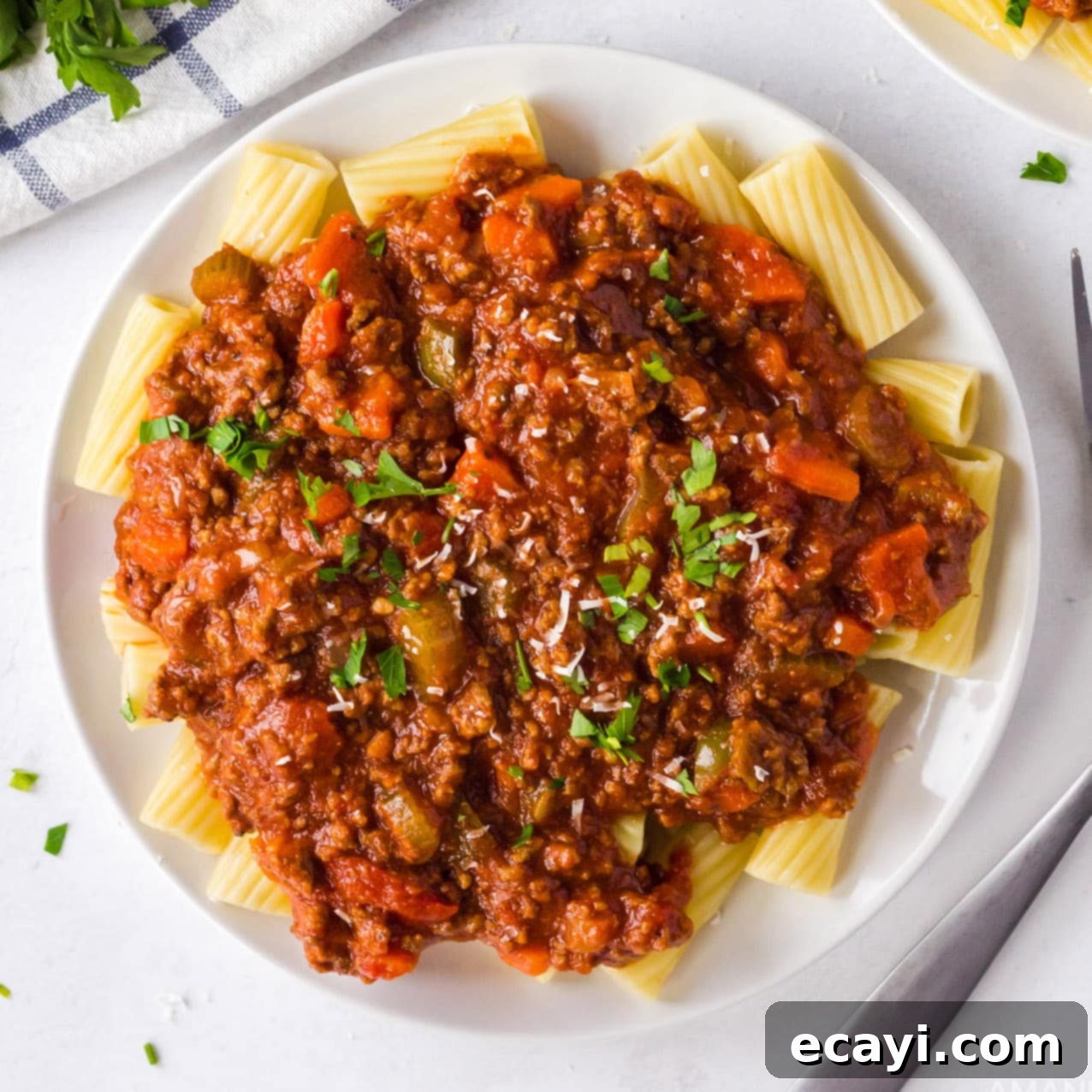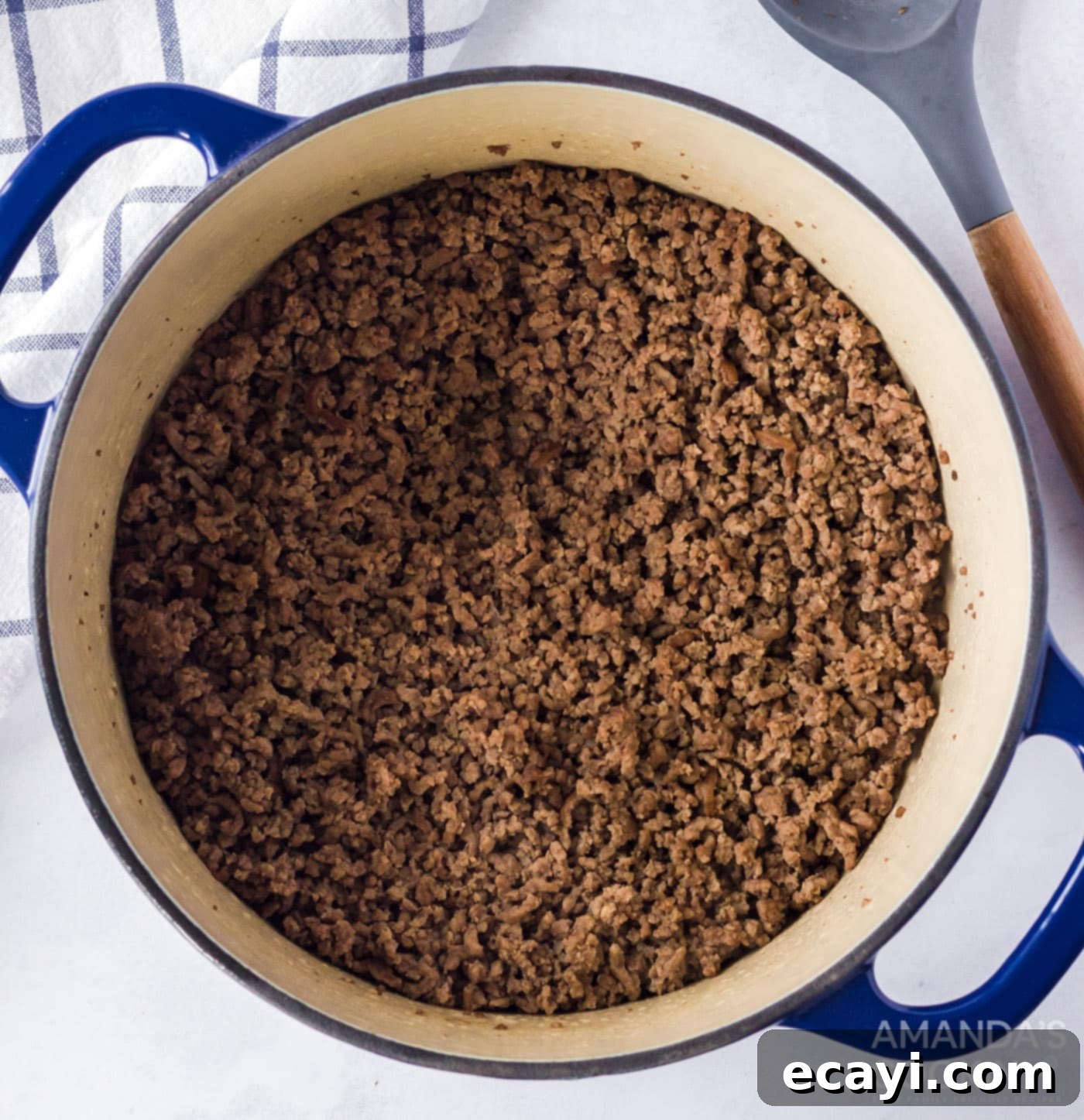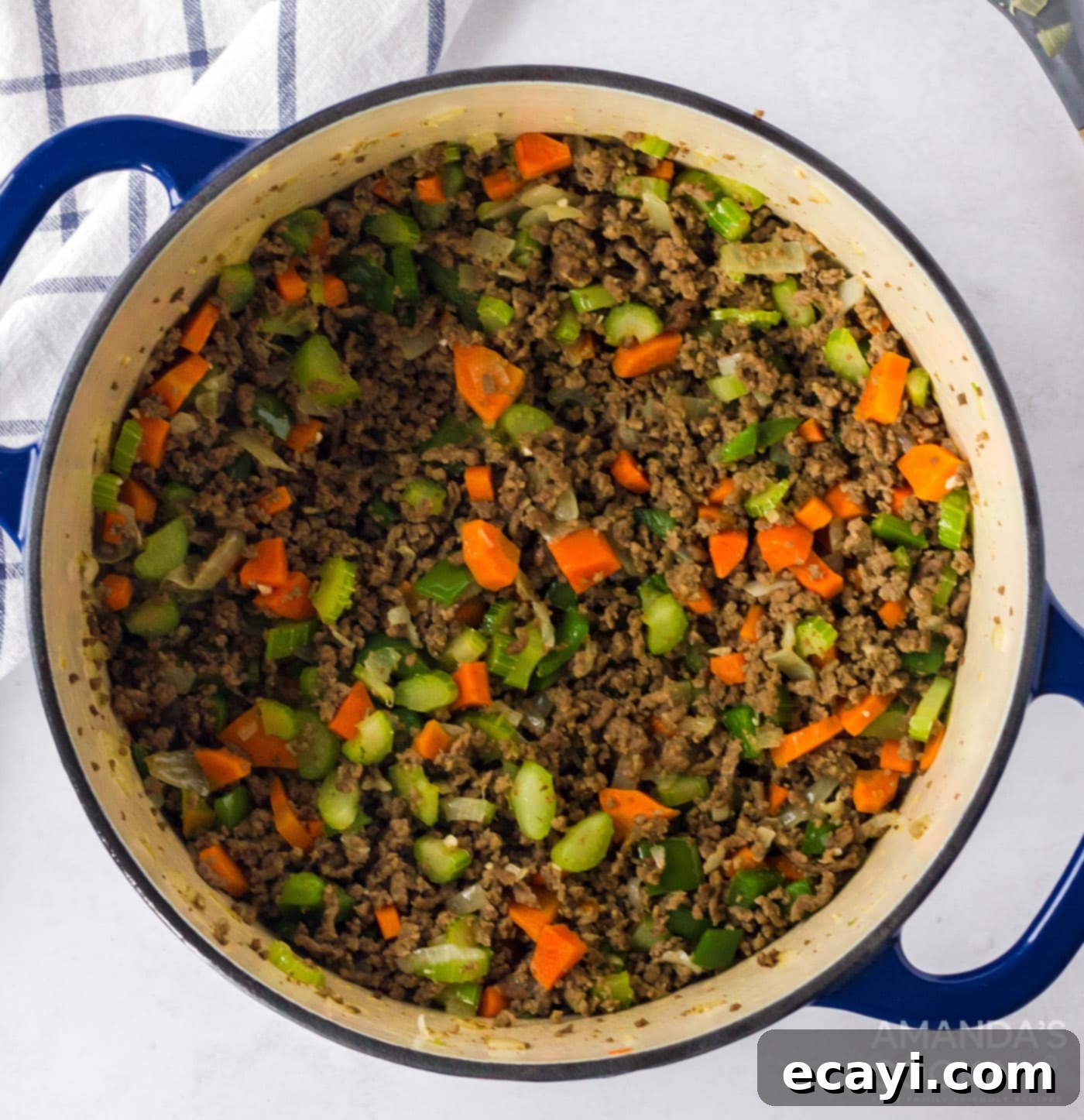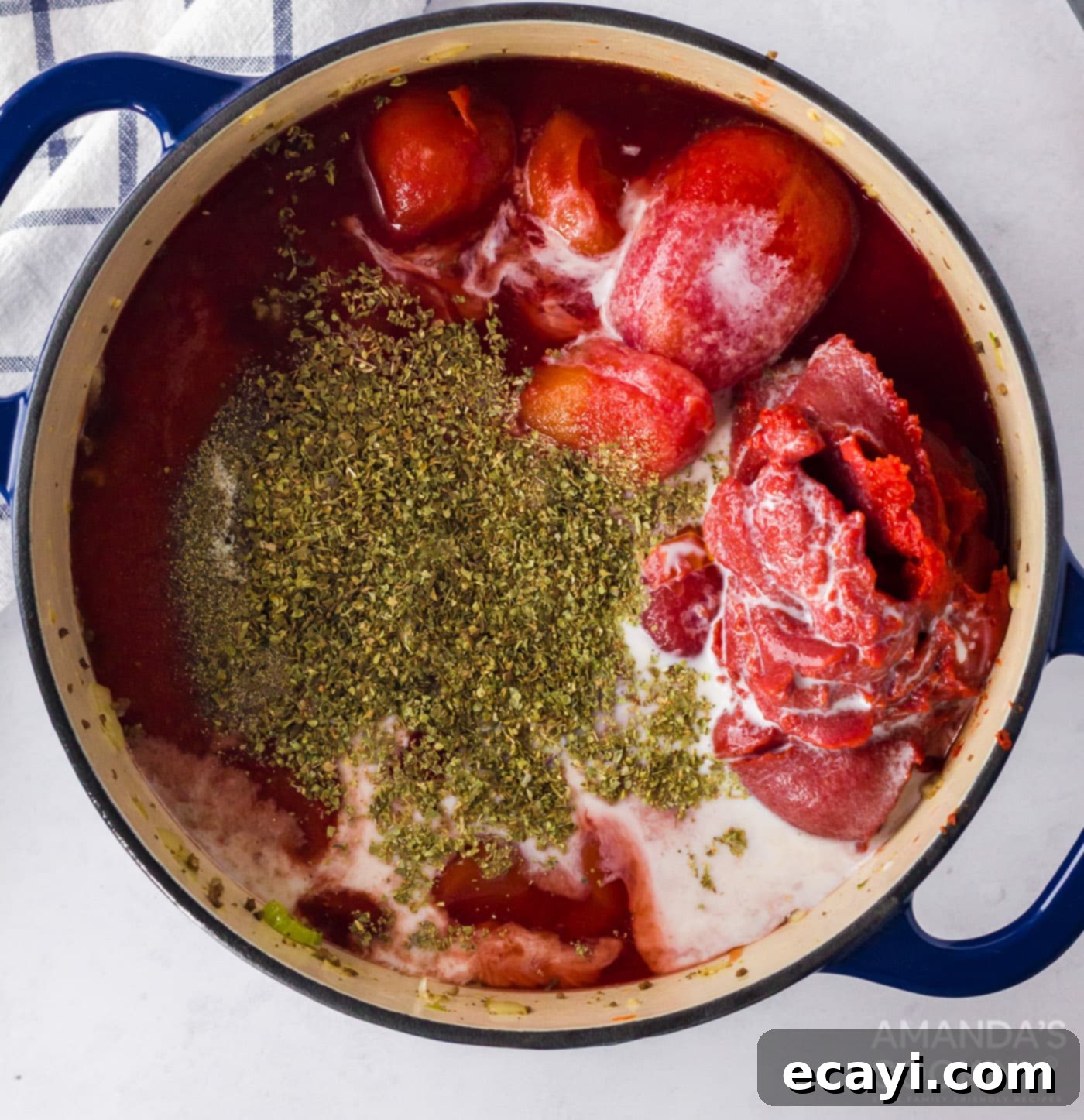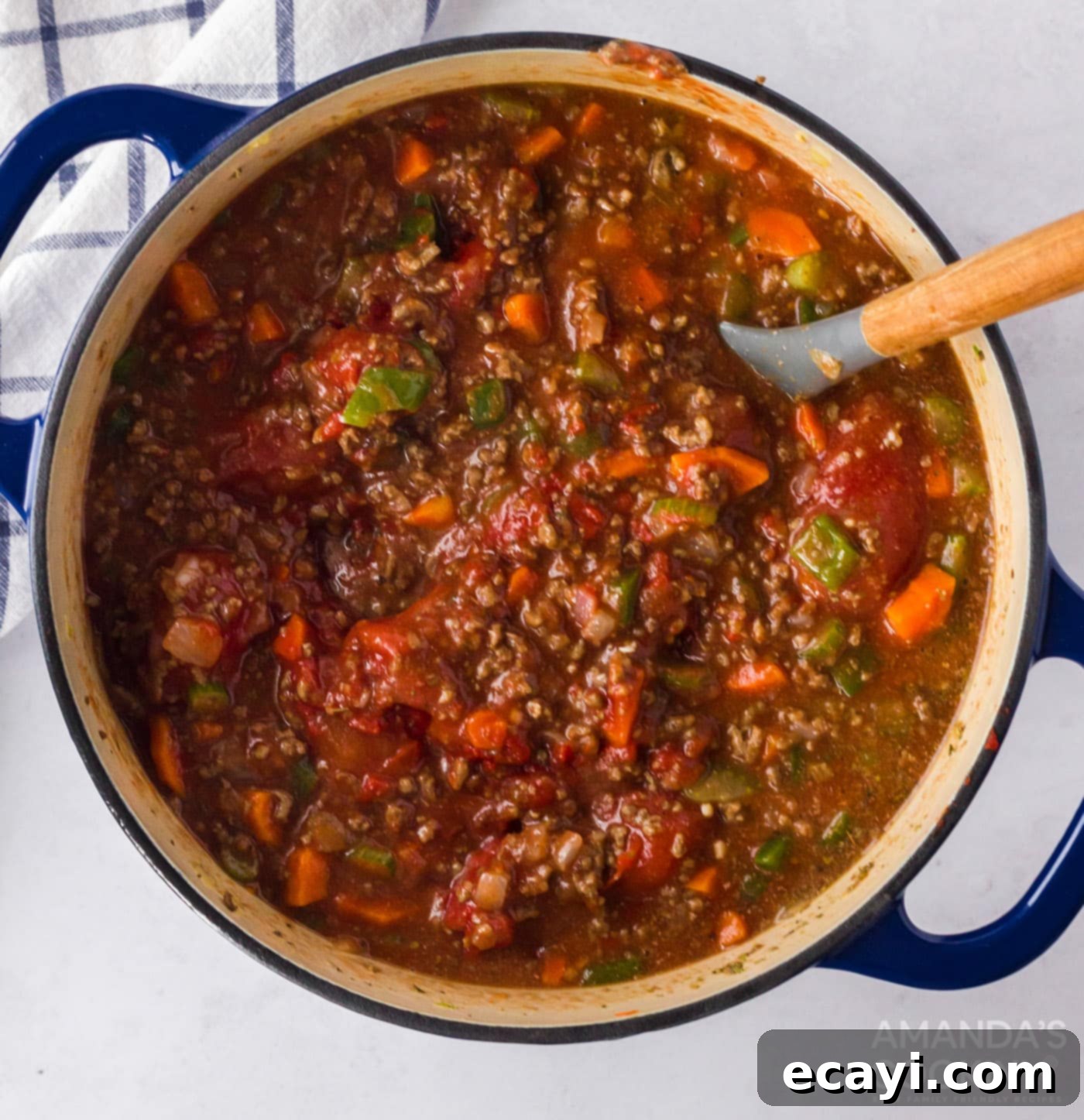Classic Bolognese Sauce Recipe: How to Make Rich, Hearty Italian Ragu for Pasta
There’s an undeniable comfort and richness to a perfectly crafted Bolognese sauce, a true cornerstone of Italian cuisine that has graced tables worldwide. This timeless meat sauce, which hails from the vibrant culinary city of Bologna in Italy, is much more than just a simple pasta topping; it’s a testament to slow cooking, layered flavors, and generations of culinary tradition. While many variations exist, understanding the core principles of an authentic Bolognese unlocks a depth of flavor that’s truly unforgettable. Whether you’re making it for a special occasion or a cozy weeknight dinner, this recipe will guide you through creating a hearty, robust, and utterly delicious Bolognese that will become a cherished favorite in your home.
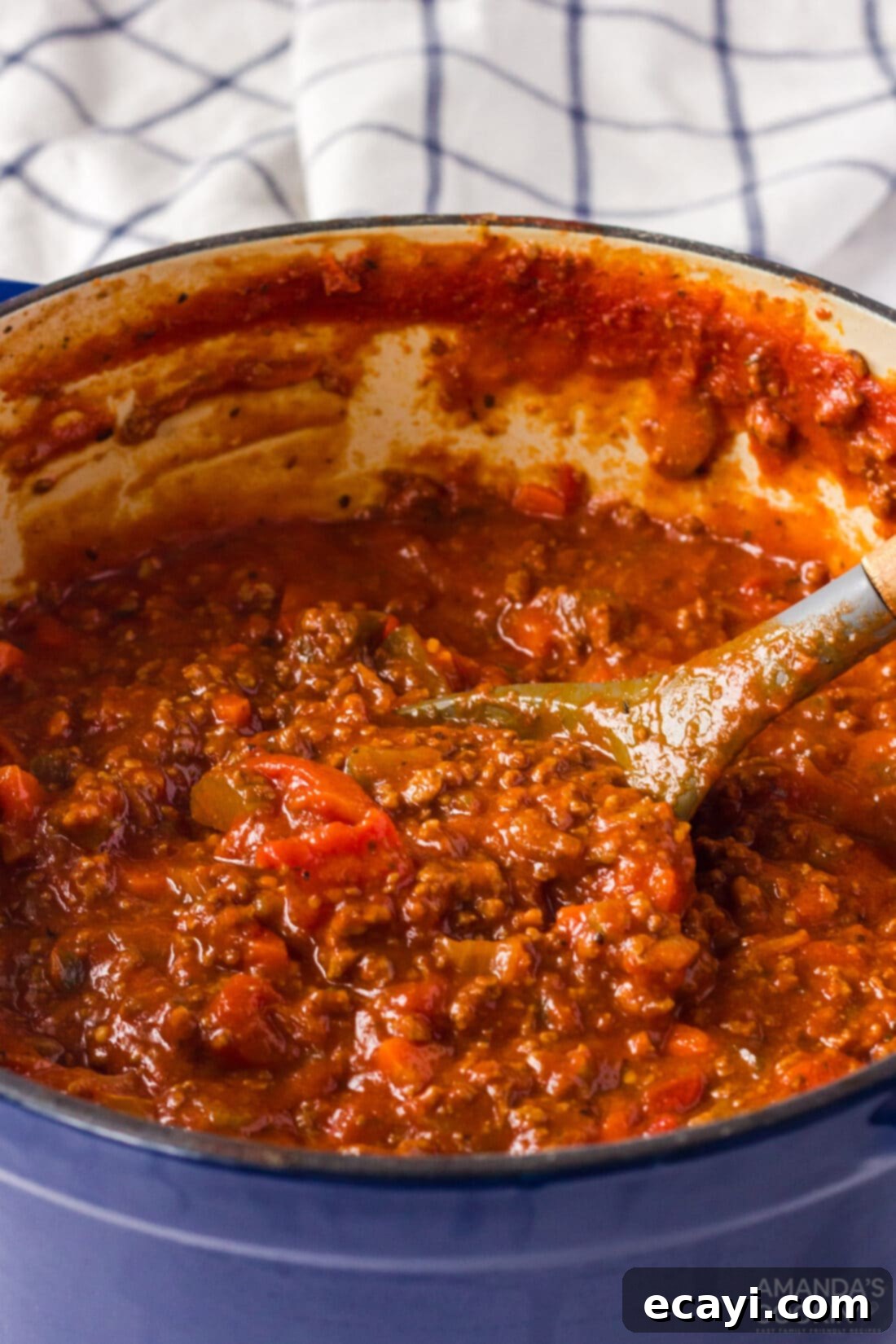
Why This Authentic Bolognese Recipe Works
What truly sets an authentic Bolognese sauce apart and makes this recipe exceptional is its understanding of balance and time. Unlike many common pasta sauces found in stores or quick weeknight recipes, a true Bolognese is fundamentally a *meat sauce* that is beautifully complemented by tomatoes, rather than a tomato sauce with a few bits of meat added. This distinction is crucial and defines the rich, savory character of this Italian masterpiece, known in its homeland as a type of ragu. Indeed, the popular Ragu brand pasta sauce derives its name from this traditional Italian term, signifying a robust meat-based sauce, not merely a marketing gimmick.
Our Bolognese starts with building a foundational layer of flavor, often referred to as a soffritto in Italian cooking. This involves patiently sautéing finely diced aromatic vegetables such as celery, carrots, and onions, along with garlic, to create a sweet and savory base. Following this, the meat is browned to perfection, developing deep, caramelized notes that are essential for umami. The magic then continues as various liquids, including dry red wine and milk, are introduced. These not only deglaze the pan, capturing all the delicious browned bits (the fond), but also work together to tenderize the meat, cut through the acidity of the tomatoes, and meld all the flavors into a harmonious blend. The sauce is then left to simmer, uncovered, for an extended period of 2 to 3 hours, allowing the ingredients to slowly integrate, thicken, and develop an incredible depth that simply cannot be rushed. This long, gentle simmer is the secret to a truly rich and cohesive Bolognese, where every component contributes to a complex, satisfying taste.
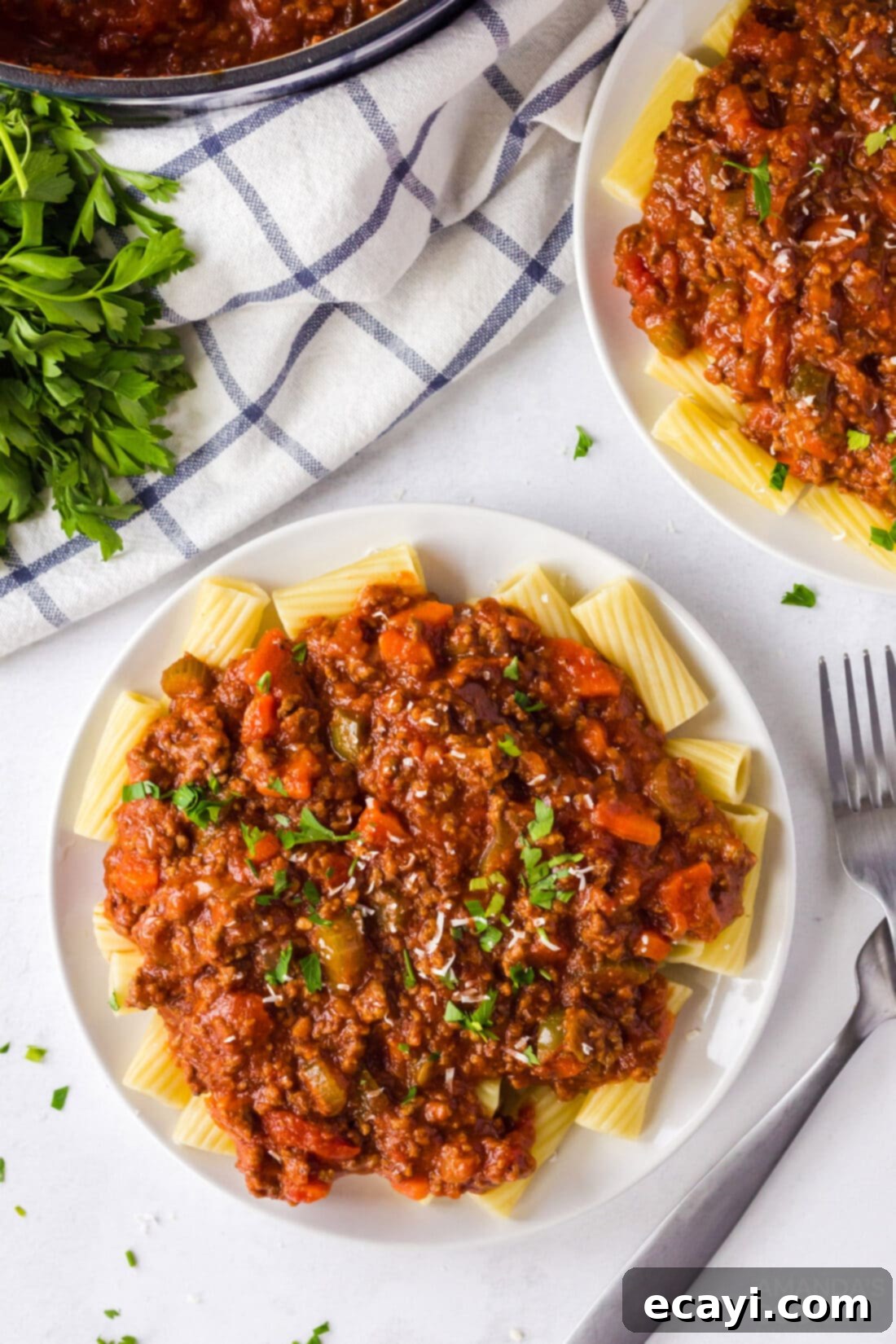
To significantly cut down on prep time, consider using a food processor for all the vegetable chopping. This handy appliance makes quick work of dicing onions, carrots, and celery, which are the backbone of our Bolognese soffritto. If your food processor often sits unused, you might be surprised by its versatility. Discover more ways to utilize this kitchen workhorse in my comprehensive guide: The Food Processor: 13 Ways to Use It and 20 Recipes to Prove It.
Key Ingredients for the Best Bolognese
Crafting an outstanding Bolognese begins with selecting quality ingredients. While the full list of precise measurements and detailed instructions can be found in the printable recipe card at the bottom of this post, let’s briefly highlight what makes this sauce so special. You’ll need fresh, aromatic vegetables for the soffritto, good quality ground beef (or a blend of meats), a variety of tomato products for depth, and crucial additions like dry red wine and whole milk which contribute significantly to the sauce’s characteristic richness and tender texture. Don’t skimp on the fresh garlic and herbs – they truly elevate the flavor profile.
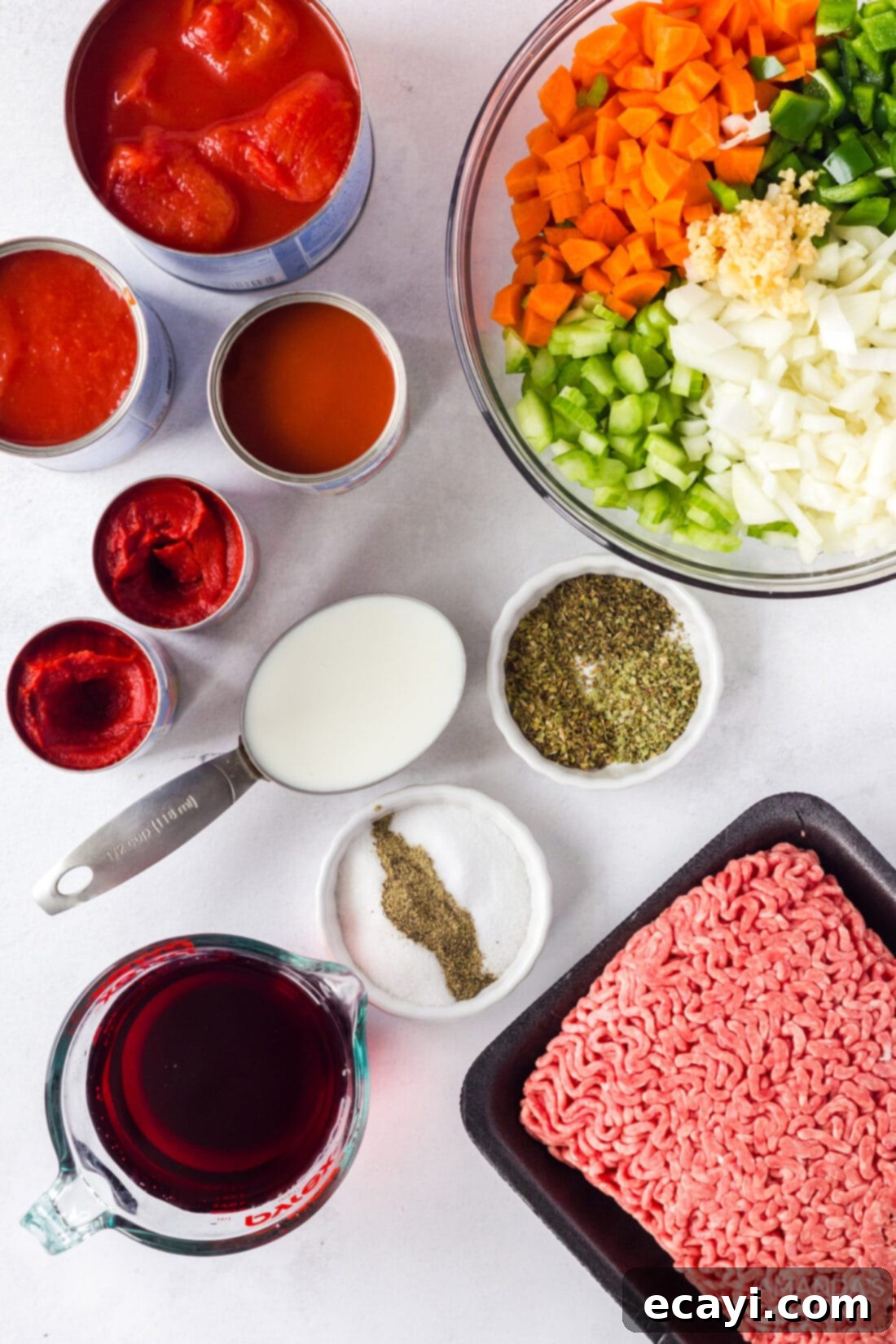
Step-by-Step Guide: Crafting Your Perfect Bolognese Sauce
Visual learners will appreciate these step-by-step photographs and detailed instructions, designed to guide you through the process of making this exquisite Bolognese sauce. For those ready to dive straight in, you can Jump to Recipe to access the complete printable version, including all measurements and full instructions at the end of this post.
- Brown the Ground Beef: Begin by heating a large, heavy-bottomed pot or a 6 qt Dutch oven over medium-high heat. Add your ground beef and break it up into small, uniform pieces using a meat chopper or a sturdy spoon. Cook thoroughly until the beef is beautifully browned all over, developing rich caramelized flavors. This browning step is crucial for adding depth to your Bolognese. Once browned, carefully drain off most of the rendered fat, leaving approximately 2 tablespoons in the pot. This residual fat will be used to sauté your vegetables and will carry over the beefy flavor.

- Sauté the Soffritto: To the pot with the remaining fat and browned beef, add your finely chopped celery, carrots, onion, and green bell pepper. Stir these aromatic vegetables into the meat, ensuring they are well-coated. Cook over medium heat, stirring occasionally, for about 5 to 10 minutes, or until the vegetables have softened and become beautifully fragrant. Just before they are fully tender, add the minced garlic and cook for another minute until it becomes aromatic. Be careful not to burn the garlic. This soffritto creates the flavorful foundation upon which the rest of your Bolognese is built.

- Combine and Simmer to Perfection: Now, add the remaining ingredients to the pot: the canned whole tomatoes (crush them with your hands or a spoon for a rustic texture), tomato soup, tomato sauce, tomato paste, dry red wine, whole milk, granulated sugar, salt, crushed dried oregano, dried basil, dried marjoram, and ground black pepper. Stir everything thoroughly until all ingredients are well combined and the flavors begin to meld. Bring the sauce to a gentle simmer, then reduce the heat to low. Allow the Bolognese to simmer, uncovered, for approximately 2 to 3 hours. A good simmer, characterized by small, consistent bubbles, is key to developing its deep, complex flavor. Stir occasionally to prevent sticking and to ensure even cooking. This extended simmering time allows the wine and milk to infuse the meat, the tomatoes to mellow, and all the individual flavors to harmonize into a rich, thick, and unbelievably flavorful sauce that defines authentic Bolognese.


Frequently Asked Questions About Bolognese Sauce
Bolognese is a classic Italian meat sauce, or *ragu*, that traces its origins back to the city of Bologna in the Emilia-Romagna region of Italy, specifically developed in the 18th or 19th century. It’s a rich, slow-cooked sauce typically made with ground meat (often a mixture of beef and pork), a *soffritto* of aromatic vegetables (celery, carrots, onion), various tomato products, wine, and often milk or cream. The defining characteristic is its emphasis on meat and deep, savory flavors, with tomatoes playing a supporting rather than starring role.
The primary distinction of Bolognese from most other pasta sauces lies in its meat-centric nature. While many popular sauces, like marinara or arrabbiata, are tomato-based, Bolognese is a hearty, meat-based sauce. Its complex flavor profile comes from a harmonious blend of slowly cooked ground meats, the sweetness of a finely chopped vegetable *soffritto*, the depth of dry red wine, and the creaminess imparted by milk. The long simmering process allows these ingredients to thoroughly meld, creating a luxurious texture and profound taste that’s far richer and more nuanced than a simple tomato-and-meat sauce.
The inclusion of milk or cream in Bolognese is a traditional and highly beneficial step. It serves several important purposes: it adds a luscious richness and creamy texture to the sauce, helps to tenderize the meat during the long simmering process, and crucially, balances the acidity of the tomatoes. This results in a smoother, more mellow, and deeply flavored sauce that is characteristic of authentic Bolognese. Using whole milk or heavy cream will yield the best results for richness, though lighter milks can be used in a pinch, albeit with a slight compromise on the sauce’s characteristic body.
Bolognese is incredibly versatile and pairs wonderfully with a variety of pasta shapes. Traditionally, it’s served with wide, flat noodles like pappardelle, tagliatelle, or fettuccine, as their broad surface area is perfect for clinging to the rich, thick sauce. However, it’s equally delicious with tubular pasta like rigatoni or penne, and even classic spaghetti (though less traditional for Bolognese in Italy). Beyond pasta, Bolognese makes an exceptional filling for lasagna, a savory topping for polenta, or a flavorful component when mixed with rice. It can also be creatively used in stuffed peppers or zucchini for a hearty meal.
Absolutely, Bolognese sauce freezes beautifully, making it an excellent meal prep option. To freeze, allow the freshly cooked sauce to cool completely to room temperature. Then, transfer it to an airtight container or heavy-duty freezer bags, removing as much air as possible to prevent freezer burn. Properly stored, Bolognese will maintain its quality in the freezer for up to three months. When you’re ready to enjoy it again, simply thaw the sauce overnight in the refrigerator and reheat gently on the stovetop over low heat until warmed through, adding a splash of water or broth if it appears too thick.
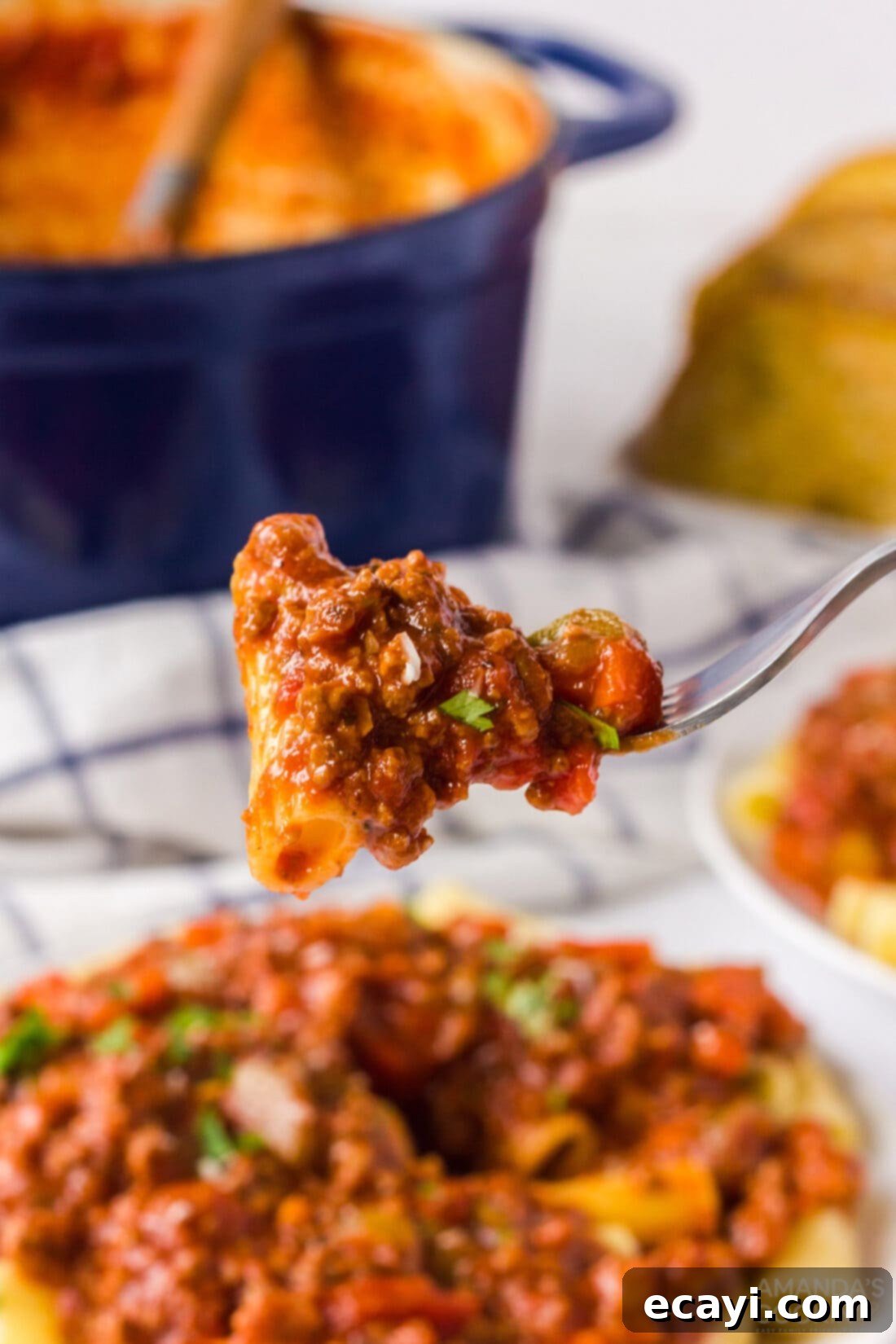
This authentic Bolognese sauce isn’t just a recipe; it’s an experience. Its deep, layered flavors make for an incredibly hearty and satisfying meal, perfect for a cozy weeknight dinner or a special gathering. Serve it generously over your favorite pasta, and for the ultimate Italian experience, pair it with some warm, crusty homemade Italian bread, perfect for soaking up every last bit of that exquisite sauce. Enjoy the timeless taste of Italy, right in your own kitchen!
Explore More Delicious Ground Beef Recipes
If you’ve enjoyed creating this magnificent Bolognese sauce and are looking for other hearty meals featuring ground beef, you’re in luck! Ground beef is an incredibly versatile ingredient that forms the base of countless comforting dishes. Here are a few more popular recipes to inspire your next culinary adventure:
- Hearty Southwest Ground Beef Casserole
- Classic Italian Lasagna with Meat Sauce
- Flavorful Homemade Chili
- Comforting Baked Ziti
- Traditional Spaghetti and Meatballs in Marinara Sauce
- Rich Veal Osso Buco (can be adapted with ground beef if preferred for a ragu style)
I’m passionate about baking and cooking, and I love sharing my culinary adventures and perfected recipes with all of you! To make sure you never miss out on new inspirations, I offer a convenient newsletter delivered straight to your inbox every time a fresh recipe is published. Simply subscribe here and start receiving your free, delicious daily recipes!
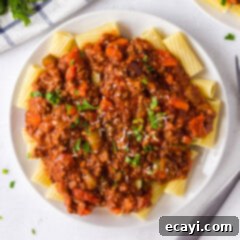
Bolognese Sauce
IMPORTANT – There are often Frequently Asked Questions within the blog post that you may find helpful. Simply scroll back up to read them!
Print It
Pin It
Rate It
Save ItSaved!
Ingredients
- 2 lbs ground beef
- 1.5 cups celery chopped, about 4 stalks
- 1.5 cups carrots chopped, about 2 large carrots
- 1 large onion diced
- 1 large green bell pepper diced
- 2 cloves garlic minced, or 1 tsp jarred minced garlic
- 28 oz can whole tomatoes
- 10.75 oz tomato soup 1 can
- 15 oz tomato sauce 1 can
- 12 oz tomato paste 1 can
- 1 cup dry red wine
- ¾ cup whole milk
- 1 Tbsp granulated sugar
- 1 Tbsp salt
- 1 tsp crushed dried oregano
- 1 tsp dried basil
- 1 tsp dried marjoram
- ½ tsp ground black pepper
Things You’ll Need
-
6 qt Dutch Oven
-
Chef’s knife
Before You Begin
- Slow Cooker Option: This robust sauce adapts beautifully to a slow cooker. First, brown the ground beef and sauté the vegetables as instructed. Then, transfer the browned meat and cooked vegetables to your slow cooker, add all remaining ingredients, and cook on low for 2 to 4 hours, or until the sauce is rich and thickened. While I haven’t tested it in an Instant Pot, a comparable pressure cooking time might be around 45 minutes with a natural release.
- Tomato Texture: For a rustic texture, I prefer to gently break up the whole canned tomatoes as the sauce simmers. However, if you prefer a smoother sauce without large tomato chunks, feel free to substitute with an equivalent amount of crushed or diced tomatoes.
- Milk Alternatives: While whole milk is recommended for optimal richness and creaminess, you can substitute it with heavy cream or half-and-half for an even more indulgent sauce. In a pinch, 2% or skim milk can be used, but note that the sauce may lack some of the characteristic depth and luxurious texture. The sauce is still delicious even if you omit the milk entirely, as I’ve done on many occasions.
- Meat Variations: For an even richer and more complex flavor, consider using a mixture of ground meats. A combination of ground beef and ground pork is a classic choice, or you could incorporate Italian sausage (mild or hot, depending on your preference) for an extra layer of savory spice.
Instructions
-
In a large, heavy-bottomed pot or Dutch oven, brown the ground beef over medium-high heat, breaking it into small pieces. Cook until fully browned and caramelized. Drain off most of the rendered fat, leaving approximately 2 tablespoons in the pot for flavor.
-
Add the chopped celery, carrots, onion, and green bell pepper to the pot. Sauté with the browned beef for 5 to 10 minutes, stirring occasionally, until the vegetables soften and become fragrant. Stir in the minced garlic for the last minute of cooking until aromatic.
-
Stir in the remaining ingredients: whole tomatoes (crushed), tomato soup, tomato sauce, tomato paste, dry red wine, whole milk, sugar, salt, oregano, basil, marjoram, and black pepper. Mix thoroughly. Reduce the heat to low and simmer, uncovered, for 2 to 3 hours, stirring occasionally. This long, gentle simmer allows the flavors to deepen and meld into a rich, thick sauce.
Nutrition
The recipes on this blog are tested with a conventional gas oven and gas stovetop. It’s important to note that some ovens, especially as they age, can cook and bake inconsistently. Using an inexpensive oven thermometer can assure you that your oven is truly heating to the proper temperature. If you use a toaster oven or countertop oven, please keep in mind that they may not distribute heat the same as a conventional full sized oven and you may need to adjust your cooking/baking times. In the case of recipes made with a pressure cooker, air fryer, slow cooker, or other appliance, a link to the appliances we use is listed within each respective recipe. For baking recipes where measurements are given by weight, please note that results may not be the same if cups are used instead, and we can’t guarantee success with that method.
